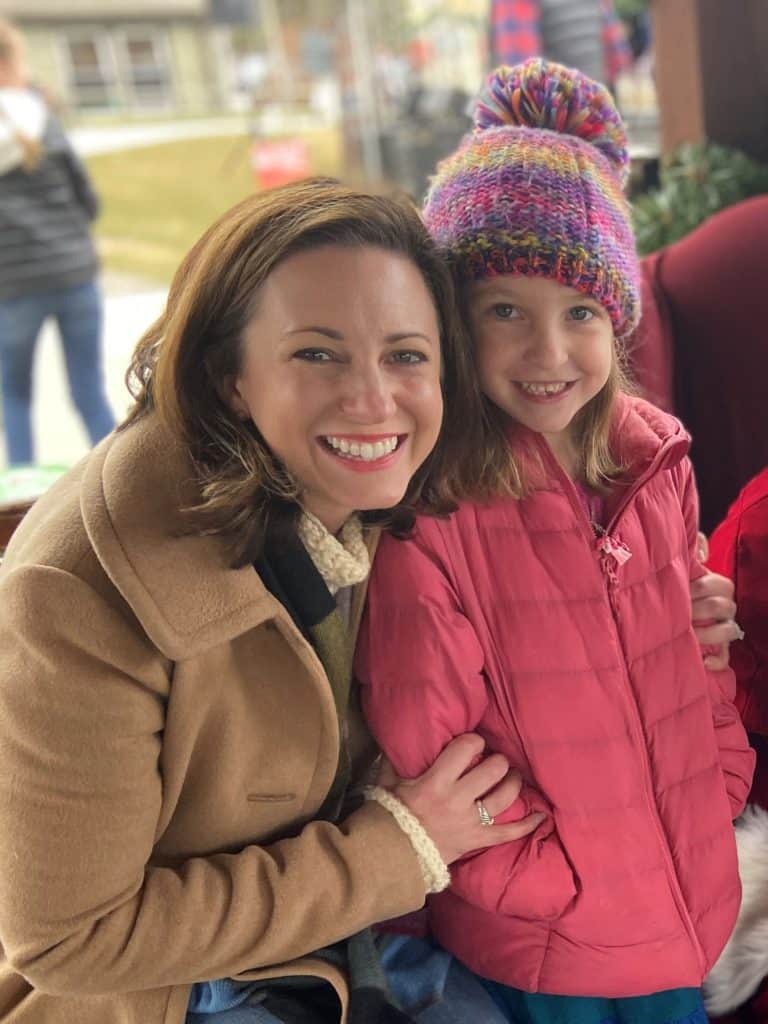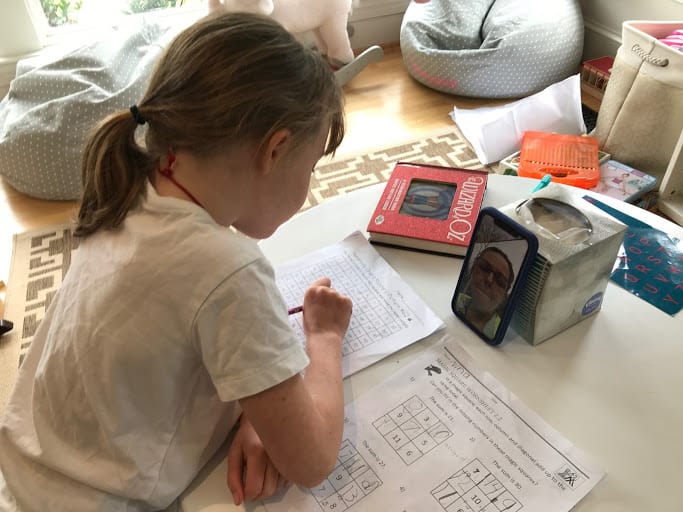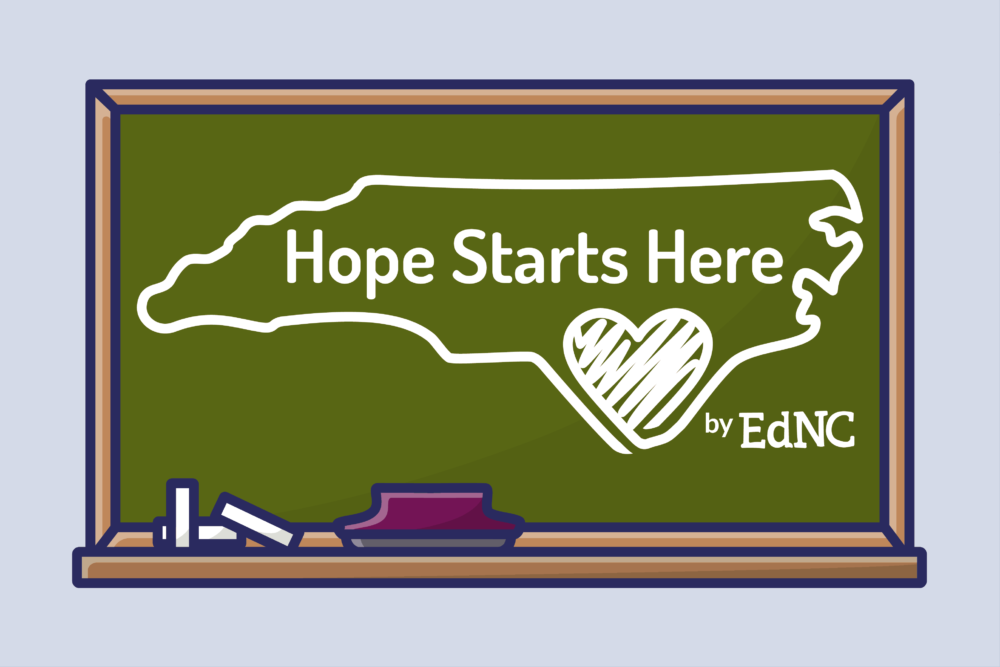Editor’s note: This article features Johanna Anderson and her first-grade daughter, Nina Anderson. Because they share a last name, we will be identifying them by first name throughout this article. Johanna Anderson is executive director of the Belk Foundation. The Belk Foundation supports the work of EducationNC.

Nina Anderson is a first-grader in Charlotte. Due to recent school closures, Nina’s classroom looks very different than it did a few weeks ago. She and millions of other North Carolina students are learning from home. I interviewed Nina, her mom, and her teacher to learn more about what learning looks like right now.
Listen in full here:
Kitchen table math class
For Nina’s mom, Johanna Anderson, her teacher could not have virtually stepped in at a better moment. Johanna had been trying to teach Nina “magic square,” a math equation in a grid format.
“We were both getting a little frustrated,” Johanna said.
It was then that Johanna received a text from Kathleen Talbert, Nina’s teacher at Beverly Woods Elementary School, who asked if now would be a good time to talk to Nina. Relieved and excited, Johanna set up Nina’s first Zoom call with her teacher.
First graders learn Zoom
Nina has adjusted to using Zoom pretty seamlessly. According to her mom, it only took her a few minutes to grasp all of the platform’s necessary functions.
“It just makes me laugh to think of how many adults are trying to figure out Zoom right now and they [kids] didn’t even get any instruction. We literally plopped the laptop in front of them. And they were using Zoom to all of its capabilities within a couple of minutes,” Johanna said.

Nina has been using Zoom for more than just school. Last weekend, she had a Zoom play date with some of her friends.
“They were using the message function and playing with that and writing very silly things back and forth to each other,” said Johanna.
Teachers showing up in new ways
The new challenges that learning from home creates, and how Talbert has stepped up to meet students in this new reality, have solidified the family’s admiration for her as a teacher. Being able to see her daughter being encouraged by her teacher and learning in action was an emotional experience for Johanna.
“She’s an incredibly accessible teacher,” Johanna said. “I had never witnessed her teaching Nina one-on-one before. And it was so amazing. To hear the way that Mrs. Talbert would explain things to her and encourage her along the way. And, you know, that was the first time I had been able to witness that.”
Johanna knows that as incredible as Talbert is, she is not unique, and Johanna is grateful for that.
“It’s such a gift personally, to us and to our family, but I know that as amazing as she is for us, she’s not an exception across our state right now,” Johanna said. “I mean, there are thousands of Mrs. Talberts. As exceptional as she is to us, she’s just one example of what’s happening across the state.”
“The amount of teacher appreciation and love going through the entire state right now is a really encouraging moment of hope for me.”
Vulnerability as a teaching tool
When asked if she had any advice for other parents, Johanna recommended that we “give grace to everyone right now,” as we all move through this unprecedented time together.
She also noted the importance of vulnerability.
“We need to give ourselves that permission to mess up, because that’s going to happen a lot. And it’s, you know, it’s also good for kids to see healthy ways of working through disappointment, working through frustration, and coming out on the other end. I think we try and protect kids a lot,” Johanna said. “But being vulnerable and showing kids how we talk about and process our feelings can be very cathartic for the parents, but it’s also really instructive to the children.”
Mrs. Talbert’s approach
After speaking with Nina and Johanna, we caught up with Talbert. She said her approach right now is doing what she’s always done — showing up to teach to the best of her ability. Right now, that looks like a lot of Zoom and phone calls, and not just for the children in her first grade class — but for their parents, too.
“We just really have to be flexible and, you know, just really support,” Talbert said. “I mean, I feel like I’m supporting my parents as much as I am teaching my children.”
“I feel like we just need to meet the needs of the kids and their basic needs first. So for me and my team, I’m encouraging some of the other teachers to stop communicating so much,” said Talbert, who is also a parent. “We parents only need one message a day or maybe one every other day.”
She confessed that when she saw her students all on Zoom together for the first time, she “got a little choked up.” Then, she did what she’s so used to doing — started teaching — except this time, it was through a screen.
What one first-grader misses about school
As for Nina, she’s adjusting, but she still misses school. When asked what she misses most, she said “learning about birds.”
Her favorites are the hummingbird and the blue jay. And she looks forward to when she’ll get to learn alongside her classmates and with her teacher in person again.


